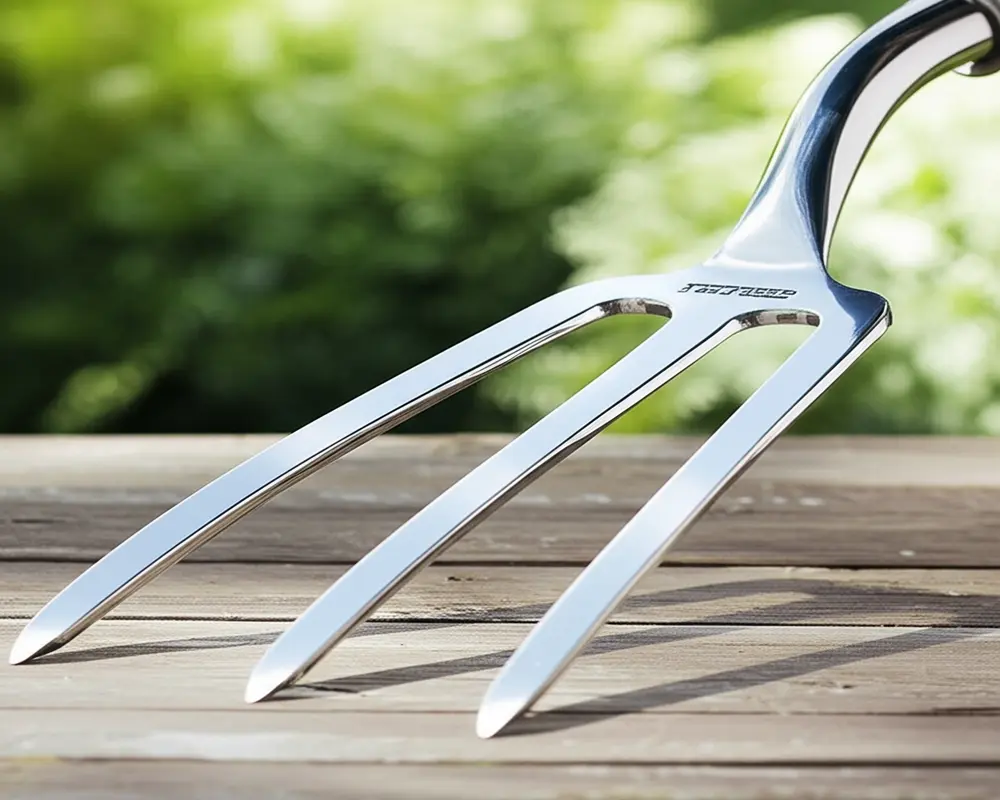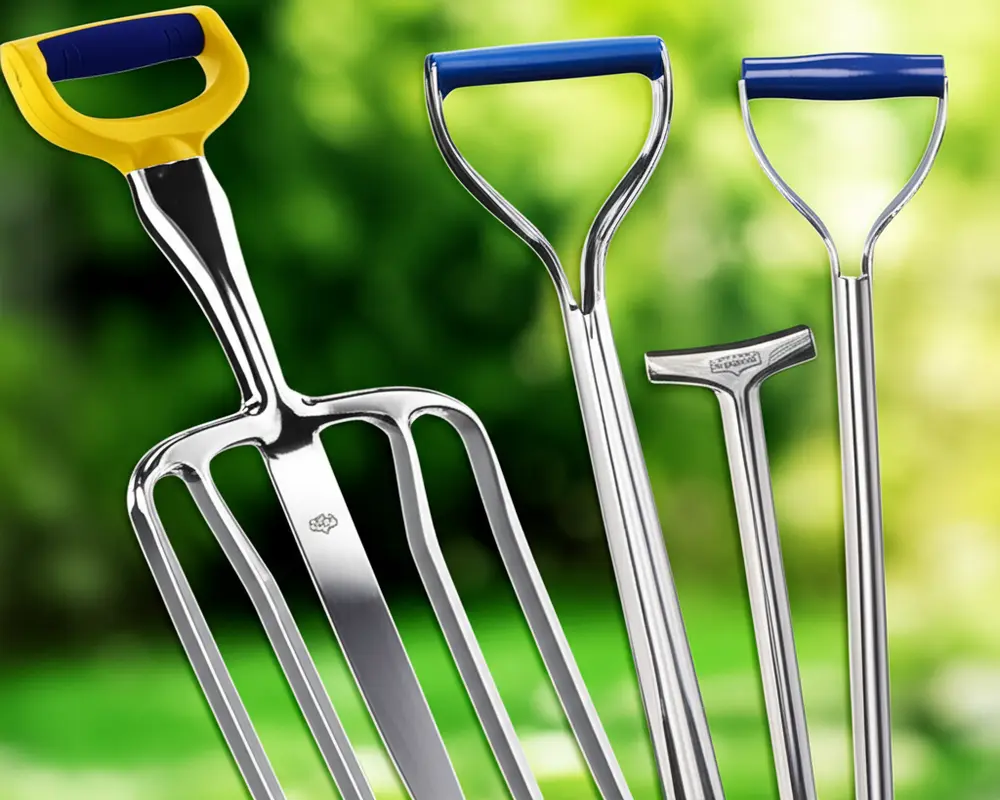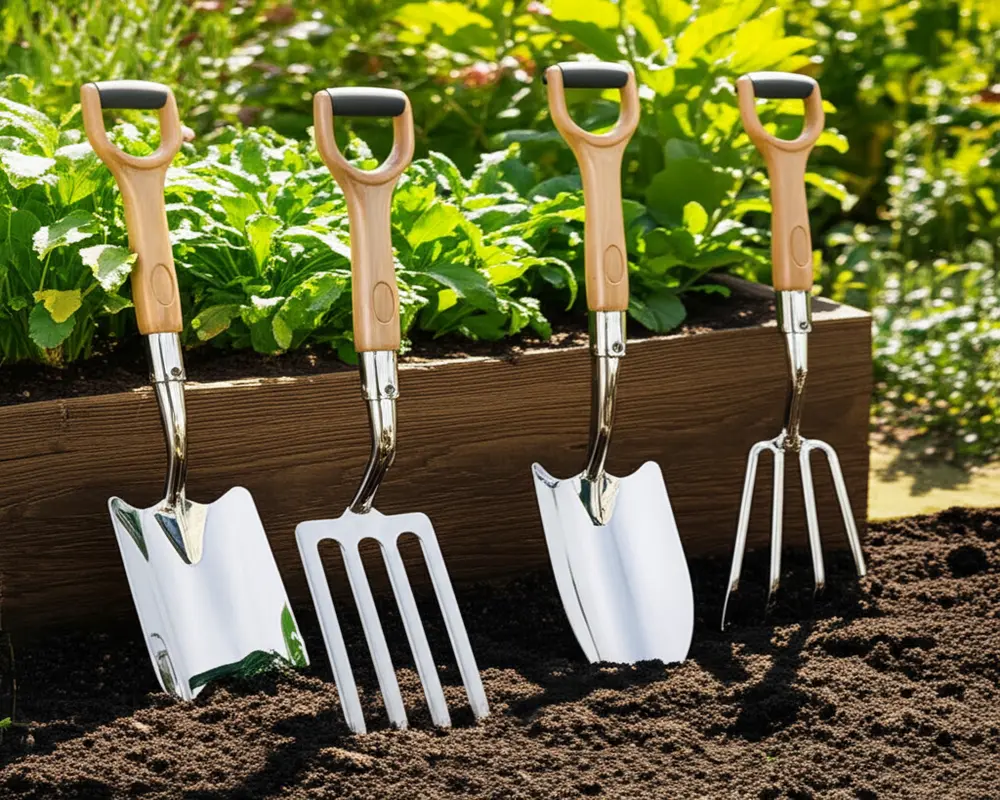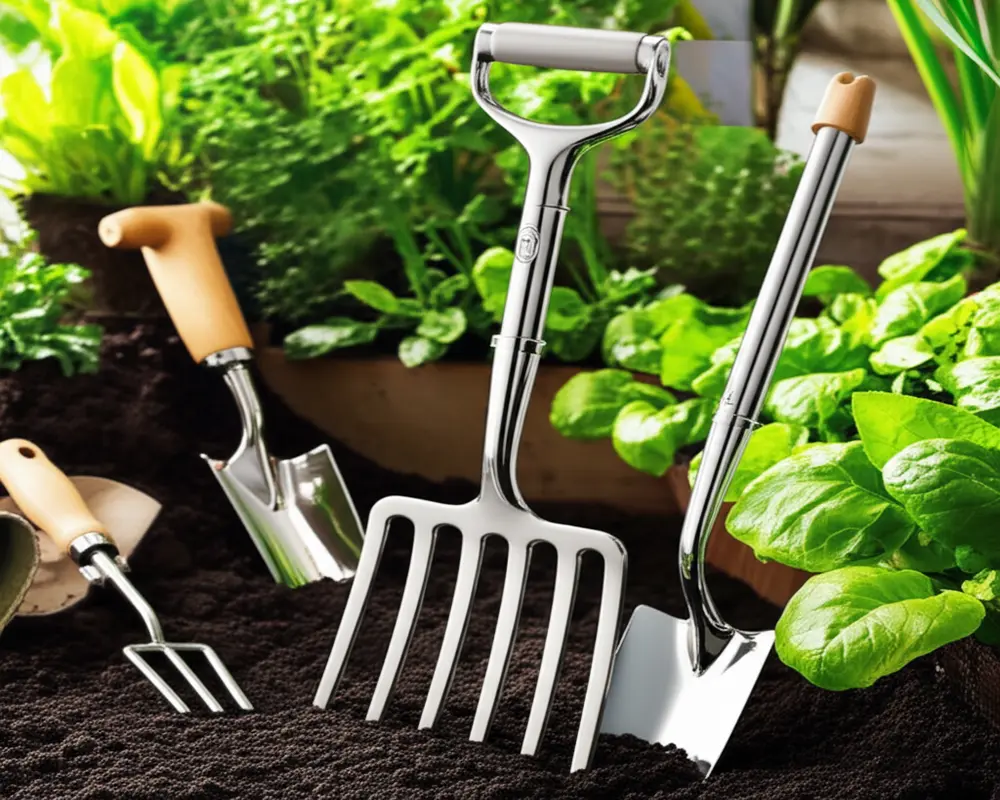Stainless Steel Garden Fork: Ultimate 2025 Guide for Durability & Performance
When it comes to gardening, the right tool can transform your experience, making tasks easier and more efficient. Among these tools, a stainless steel garden fork holds a special place due to its combination of strength, rust resistance, and longevity. Many gardeners face frustration with ordinary forks—bent tines, rusting metal, or broken handles can slow down your work and reduce tool lifespan. Stainless steel garden forks offer a solution with their exceptional durability and resistance to corrosion, ensuring you a reliable partner in your gardening tasks for years to come.

This comprehensive guide is designed to help you select the best stainless steel garden fork tailored to your gardening needs. From understanding the science behind stainless steel to expert advice on choosing the right design and maintenance tips, we've got you covered.
Why Stainless Steel? The Unmatched Benefits for Garden Tools
The superiority of stainless steel lies primarily in its material properties. Unlike traditional carbon steel, stainless steel contains a chromium content that forms a microscopic layer of chromium oxide on its surface — this passive layer protects the metal from rust and corrosion even after prolonged exposure to water and soil. For gardeners, this translates to a rust-resistant garden fork that withstands the rigors of outdoor use without degrading.
Strength is another key advantage. Stainless steel garden forks often employ grades like 304 or 420 stainless steel, known for their excellent balance between hardness and toughness. These metals resist bending and breaking much better than carbon steel, making them ideal for tackling tough soils or rocky garden beds.
Maintenance is easier with stainless steel. The polished surface of these forks reduces soil adhesion, meaning less time spent cleaning after use.
Furthermore, durable stainless steel implements add value by lasting longer—potentially for decades with proper care. Their hygienic, non-porous surfaces help maintain soil health by limiting pathogen transmission, an often-overlooked benefit.
Choosing Your Ideal Stainless Steel Garden Fork: An Expert Buying Guide

When selecting a garden fork, several factors influence performance and comfort. A good fork balances the design of its head and handle, tactical weight distribution, and suitability for specific gardening tasks.
Head (Tine) Design & Material
The tine design varies mainly by number, shape, and construction style. Four or five tines are common; four-tine forks often provide better soil penetration while five-tine models offer wider lifting capability. The shape — whether flat, chisel, round, square, tapered, or parallel — affects how the fork interacts with soil and roots. For example, tapered tines are excellent for loosening soil, whereas flat tines can be more effective for turning compost.
Inspect the fork's socket or ferrule construction, which connects the head to the handle. Solid forged heads generally provide superior strength and reduce the risk of wobbling compared to strapped or welded designs.
A polished finish on the head helps minimize dirt buildup and guards against rust, ensuring your tool remains efficient and clean after every use.
Handle Material & Ergonomics
Handle material plays a large role in comfort and durability. Ash wood handles offer a traditional aesthetic with natural shock absorption, while fiberglass handles combine lightweight construction with high weather resistance. Stainless steel shafts often use ergonomic grips to reduce strain but can be heavier.
Handle shape caters to different preferences and tasks. D-handles provide excellent leverage for digging, T-handles offer versatile grip options, and straight handles are versatile for aerating and light digging tasks. Matching handle length to your height prevents fatigue and improves control.
Weight & Balance
Forks that are too heavy can cause rapid fatigue, especially during prolonged use, while overly light forks may lack digging power. Look for a well-balanced tool where weight is evenly distributed between the head and handle for comfortable use.
Task Suitability
Understanding the specific fork type needed is crucial. Digging forks excel in loosening compacted soil; border forks are smaller for delicate work near plants; compost or manure forks are designed with longer tines for aerating organic material; aerating forks assist in creating pathways for air and water in soil.
Warranty & Brand Reputation
Reliable brands back their tools with robust warranties, often lifetime guarantees. Investing in trusted brands ensures high-quality craftsmanship and support if issues arise.
Our Top Stainless Steel Garden Fork Picks: Tested & Reviewed for Performance

Our selection process involved rigorous testing under various soil conditions, emphasizing digging efficiency, ergonomic comfort, and long-term durability. Here are our top recommendations for 2025:
- Best Overall: Garden Hand Fork, Hand Weeding Fork with Sharp Tine for Easy Uprooting Large Weeds, Stainless Steel Garden Fork, Comfortable Grip Wood Handle Hand Fork for Fast Weeding, Loosening Soil and Composting — Featuring forged stainless steel head, ergonomic D-handle, and balanced weight, perfect for both novice and professional gardeners. Find detailed review and purchase options here.
- Best Budget-Friendly: Berry&Bird Gardening Hand Fork, Stainless Steel Hand Weed Fork — Offers solid performance with stainless steel tines and a comfortable fiberglass handle at an accessible price.
- Best for Heavy Clay & Rocky Soil: Classic 3-Piece Garden Tool Set – Durable Stainless Steel with Wood Handles — Reinforced tines and extra-strong socket construction for digging in challenging terrains.
- Best Ergonomic/Lightweight: Berry&Bird Gardening Hand Fork, 22.6 Inches Long Handled Stainless Steel Weed Fork — Lightweight fiberglass shaft combined with a well-designed grip to reduce strain during extended use.
- Best Border Fork: Bulldog 7104772890 Evergreen Border Fork — Compact size with polished stainless steel for precision weeding and planting in tight spaces.
These recommendations are updated annually. For related tools, visit our in-depth garden tools stainless steel section for spades and digging aides.
Extending the Life of Your Stainless Steel Garden Fork: Care & Maintenance
Proper care ensures your fork remains effective and rust-free. After each use, gently remove soil to avoid accumulation, leveraging the polished stainless steel surface that repels dirt. Dry your tool thoroughly before storage to prevent moisture buildup that could affect handle wood or metal fittings.
Wooden handles benefit from periodic oiling to maintain moisture balance and prevent cracking. Regularly inspect all fittings and sockets for looseness or damage, tightening or repairing as necessary.
If tines become dull, sharpen them carefully with a file or sharpening stone, enhancing ease of soil penetration and reducing effort.
Stainless Steel Garden Fork FAQs
- Is stainless steel worth the extra cost?
- Yes, for the durability and corrosion resistance, stainless steel tools remain sharper and more structural over time, offering better value for money in the long run.
- What is the typical lifespan of a good stainless steel garden fork?
- With proper care, a high-quality stainless steel garden fork can last 10 to 20 years or more.
- Can I use a digging fork for lawn aeration?
- While possible, it's better to use a fork or tool designed specifically for aerating to avoid damage and fatigue. Aerating forks are usually lighter and shaped for that task.
- What is the difference between digging fork and border fork?
- Digging forks are larger and stronger for soil loosening, while border forks are smaller, more precise tools for working around plants and edges.
- Do stainless steel tools rust?
- Stainless steel significantly resists rust compared to carbon steel, but poor maintenance or exposure to harsh chemicals can cause some corrosion over time. Regular cleaning and storage reduce this risk.
Conclusion: Investing in Your Gardening Future
Choosing a quality stainless steel garden fork is investing in years of gardening efficiency. Its rust resistance, strength, ergonomic benefits, and longevity provide unmatched value. By selecting from trusted brands and maintaining your tools properly, you'll experience enhanced gardening performance and reduced frustration.
Take the first step toward a better gardening experience by exploring our trusted recommendations and expert buying guide. Equip yourself with tools that work as hard as you do and enjoy the satisfaction of a well-tended garden year after year.
For further insights on gardening implements, consider reading about ergonomic garden spades or check expert reviews of garden forks by The Spruce. Additionally, learn more about stainless steel properties from the American Stainless Steel Association to deepen your understanding of material benefits.

